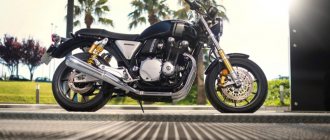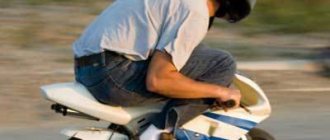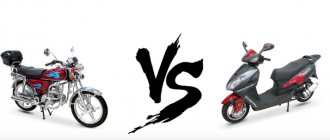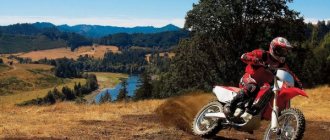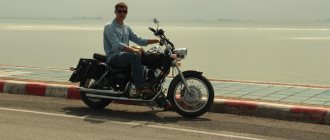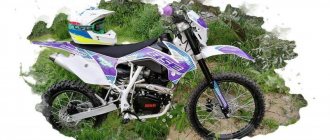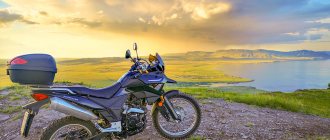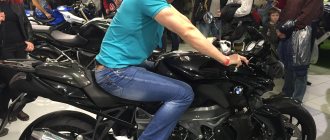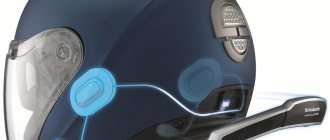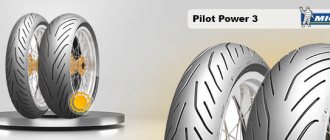Just a couple of decades ago, motorcycle lovers had to choose between “Java”, “Jupiter” and “Ural”, but now you can easily buy motorcycles from famous world manufacturers. For many years now, the Japanese company Honda has been considered the leader in the production of motorcycles, offering bikers a wide range of equipment for every taste and in various price ranges. One of the most popular bikes is the Honda vfr 800 fi, which belongs to the super sports class motorcycles, combining the parameters of a sprinter with maximum acceleration and a stayer with a stable average speed. This model of motorcycle vehicle can be used both in city conditions (it has high maneuverability) and on the highway, where it can be used to reach speeds of up to 240 km/h.
How the VFR 800 modification appeared on the motor market
For the first time, the Honda VFR 800 became available to motorsports enthusiasts in 1998 as a sports touring model, replacing the fairly popular motorcycles of the Honda VFR750 series. If we turn to the official regulatory and technical documentation, this modification is called the Honda vfr 800 fi Interceptor, and the FI marking stands for Fuel Injector - since the release of the first modification of this equipment, it has been equipped with an injection-type engine. Interceptor is a designation added to models sold in the United States.
The Honda vfr 800 fi has quite a lot of differences from its predecessor - a new design, an injection-type engine with increased displacement, and a new brake system with ABS installed. The 2002 model comes with VTEC, but does not feature the patented gear timing technology, replacing it with a traditional chain drive. The presence of a diagonal frame made of aluminum, a rear pendulum design of the console type, variable VTEC timing modes and wheel rotation control make it possible to give the bike additional maneuverability and power. In 2010, based on the engine and chassis of this model, the VFR800X Crossrunner modification was designed and released - a touring enduro that is in demand among outdoor enthusiasts.
Bike generations
Today you can find three main generations of this modification of the bike:
- 5th generation - produced from 1998 to 2001. This model used a high-power injection engine, plastic linings from the VTR100 and a combined brake system;
- 6th generation – 2002-2013 The modification is equipped with double exhaust pipes, ABS and a system that changes the timing and stroke of the valves;
- 8th generation – production started in 2014 and continues to this day. Honda vfr 800 Interceptor of this series has an original design, instrument panel, one exhaust, wheels of reduced weight and control of engine power characteristics. In the United States, “Standard” and “DeLuxe” versions are sold; in Europe and the Russian Federation, only “Standard” can be purchased.
Honda vfr 800 vtec is a fairly prestigious type of motorcycle belonging to the “above average” class. But at the same time, the bike is not involved in official motorcycle competitions, since it does not have a sufficient number of additional settings. Among the distinctive features of motorcycles in this series are the aerodynamic front part of the bike, the use of carbon fiber to create body kits, each of which serves as protection for a specific component or assembly. The technical characteristics of the Honda vfr 800 vtec model are such that the tail can be dismantled without any problems to access a specific unit.
Non-standard modifications
In addition to the basic configurations, successfully sold on the European and American markets, you can find the motorcycle in a version dedicated to the anniversary of the Honda company - Honda VFR 800i Anniversary. This version is similar to the basic modification, but is made in silver and red tones, but it is not in great demand.
Many motorcyclists in our country and around the world fell in love with the Honda vfr 800 fi motorcycle in the “sport-tourist” version, equipped with a more environmentally friendly engine. In this version of the motorcycle engine, the fuel injection parameters have been changed, a catalytic converter has been installed, allowing for maximum purification of gases and significantly reducing the level of harmful emissions. At the same time, the “sport tourist” is equipped with an automatic fuel mixture enricher, the presence of which simplifies starting the engine in the cold season. The clutch is also modified - in this version it is softer, and the motorcyclist starts off more smoothly.
Electrical equipment
The motorcycle is equipped with a 12-volt electrical circuit:
- ignition system – electronic in full;
- battery - 12 volts/10 ampere-hours;
- engine starting – electric starter;
- generator power – 497 watts;
- headlights - four 55-watt halogen lamps, low and high beam, in pairs;
- turn signals - four 15-watt lamps, two front ones in white corrugated shades, two rear ones under red plastic caps;
- brake light - red light with a 40-watt lamp.
The year 2004 was marked by the modernization of the motorcycle in terms of the installation of new electrical options. Buttons have appeared that turn on special beacons for emergency parking, and some other signaling devices.
Engine design features
In the Honda vfr 800, the technical parameters are such as to provide a combination of comfort, power and controllability of the motorcycle. The chassis of this modification with an 800 cc engine. cm. quite different from the 750 cc version. cm. Separately, we can highlight the front fork, which has undergone dramatic changes - the diameter of the “stays” has increased to 41 mm, which makes it possible to give the motorcycle additional stability while riding. After the update, the design became known as the Honda Multi Action System, and has been successfully used for many years. In the updated version, the rear suspension has changed and began to be designed in the form of a cantilever pendulum, which has a positive effect on driving characteristics. The presence of D-CBS (combined braking system) has significantly increased the safety of riding a motorcycle, especially at high speeds and emergency braking.
Electrical and ergonomics
In the Honda vfr 800 model, the technical parameters of the electrical system are improved due to the installation of a modern relay regulator. In order to reduce the likelihood of the bike being stolen, this series is equipped with a proprietary immobilizer - Ignition Security System. In the Honda VFR 800 version of the motorcycle, relative to the previous model, the side rear view mirrors are modified, equipped with aluminum alloy brackets, made in a fantastic style. The bike's mirrors are slightly offset towards the body, which allows them to be hidden from drops of precipitation.
Photo gallery
Thanks to its good build quality, the VFR 800 is still quite popular in its circles. The production of this bike continues to this day, we invite you to familiarize yourself with its changes from generation to generation. Enjoy watching.
Specifications
The technical characteristics of this modification are selected to ensure maximum comfort, safety and power of the bike while driving both in the city cycle and on the highway. The installed 4-cylinder DOHC engine is equipped with 16 gas distribution valves, thanks to which it is possible to obtain a torque of 80 Nm and a power of up to 107 horsepower. The use of a PGM-FI injector in the injection system allows you to obtain fuel consumption in the range of 6-6.5 liters per 100 km, which is considered an average for bikes of this class. According to reviews from owners, real consumption figures are slightly higher - 8-10 liters, but at the same time you can feel the maximum power of the motorcycle in free riding mode in the urban cycle.
In 2001, an updated version of the Honda vfr 800 vtec was introduced, which features an improved gas distribution system that allows optimizing engine afterburner with a sharp increase in power indicators.
This version features a specially designed muffler with integrated noise reduction system. It uses a straight-through exhaust cone design, equipped with 2 cones, which makes the engine sound like a small turbine. As the speed increases, the sound becomes louder, but does not exceed acceptable limits.
Design features of the chassis and braking system
If you read reviews about the Honda vfr 800 on the Internet on specialized forums and websites, you can hear many positive opinions regarding the running equipment. The front suspension is implemented using a cartridge telescopic fork with a stroke of 10.8 cm. The rear suspension is an adjustable cantilever pendulum, equipped with a gas-oil shock absorber with a stroke of 12 cm.
The technical characteristics of the brakes of the Honda VFR 800 bike are selected in such a way as to ensure their optimal performance while driving. On the front wheel there is a double disk with ventilation and a hydraulic system of a combined standard, on the rear - similar to the front one, but single.
Appearance
The VFR 800 initially seems quite wide; plastic body kits give it volume.
However, upon closer inspection, it is not that wide. But the existing body kits give a smooth shape, which is important for aerodynamics.
These body kits completely cover the front part, so of all the engine elements you can only see the radiator, and even then - in the front part, behind the wheel.
The V-shaped double headlight at the front gives the motorcycle a certain predatory appearance . A transparent fairing rises up from the headlights, behind which is a digital instrument panel.
Behind the steering clip-ons there is a “humpbacked” tank, providing the driver with a reclining position.
Due to the volume of the tank, the double seat is located almost entirely on the rear fender. Starting from the seat level, you can at least slightly examine the design; the frame and elements of the rear suspension appear.
On the right side there is a single exhaust pipe.
One of the most successful motorcycles from the global brand, Honda, is the XR 600 R, let’s look at its characteristics.
You can evaluate the range of Honda ATVs in our topic: https://themoto.net/atv/yaponskie-atv/honda-atv/obzor-modeley.html
Constant improvements to the bike
Just look at any review about this motorcycle, and it becomes clear that Honda specialists are constantly working to make the VFR 800 more advanced, while satisfying the needs of motorcycle enthusiasts. To this end, the technical parameters of the Honda vfr 800 bike are regularly improved - in the latest modifications, low and medium speeds have been equalized, dips that occurred with a sharp increase in power indicators have been eliminated, and the fuel injection system has been improved.
Despite the fact that many bike owners did not quite like the replacement of the gear mechanism with a chain drive, it became easier to repair, since the transmission was modernized at the same time. The modernization of the gearbox led to the fact that the first gear became shorter and the rest longer. Among the important changes in the latest versions is the increase in weight due to the installation of additional rear suspension brackets, but their installation made the frame more rigid and reliable. In the 2003 release, attention was drawn to ABS, which was especially in demand for the “sports-tourism” class.
With each new series, the VFR 800 modification is subject to restyling - in the latest series, the exterior of the bike is changed, on which matte chrome-plated mufflers are installed, the turning lights are shifted, the windshield is tinted, and plastic parts are made in black.
New restyling
In 2006, the VFR 800 was once again modernized. The manufacturer has radically redesigned the VTEC system to soften the parameters of its operation. There have been complaints from owners about turning on the option too abruptly, causing the motorcycle to jerk. The connection point for the backup pair of valves had to be shifted to lower speeds, from 6800 to 6600 rpm, and the position of the automatic shutdown switch had to be shifted from 6600 to 6100 rpm. In combination with the new injector settings, the connection of the four-valve mode has become smoother.
The latest modernization has brought noticeable changes to the exterior of the motorcycle. The chrome mufflers became matte, the turn signals were shifted to the center, the windshield was tinted, all plastic parts changed their black color to the main color of the motorcycle.
Bike price
The cost of the Honda VFR 800 model is one of the questions of interest to many motorcycle enthusiasts. On the Internet (on bulletin boards and specialized websites) you can find the cost of a new bike ranging from 3,000 to 7,000 USD. depending on the year of manufacture and configuration. A new one costs a little more – 9-14 thousand.e. It is worth separately noting the fact that the model is quite popular, so you can find spare parts, components and assemblies for such motorcycles not only from official dealers, but also in numerous motorcycle stores and even at engine dismantling yards.
Owner reviews
On thematic forums you can find many posts regarding this bike model, most of them positive. Owners of the Honda Crossrunner vfr800x and other modifications of this motorcycle are especially pleased with the chassis of the motorcycle, shock-absorbing properties and strength characteristics of components and assemblies. Quite often you can come across the concept “vfr800 is a men’s motorcycle model,” and this is due to the somewhat aggressive appearance and technical characteristics of the equipment. Many motorcycle owners are pleased with the braking system, which is distinguished by its reliability and the presence of ABS, which prevents the bike from skidding while driving (this is especially important when riding on a wet road). The power of the Honda vfr800 version of the motorcycle does not leave anyone indifferent either – it is optimally selected for such a mass of the bike and its performance characteristics.
Specifications
| Maximum engine power: | 107 HP |
| Torque: | 80 Nm |
| Working volume: | 782 cm3 |
| Motor type (cylinder arrangement, number of strokes): | DOHC, four-cylinder, water-cooled, 16-valve timing |
| Number of cylinders: | 4 |
| Number of valves: | |
| Intake type (Injector / Carburetor): | |
| Bore and stroke: | |
| Starting system (Electric starter, kick starter): | |
| Maximum speed in km/h: | 242 km/h |
| Cooling system: | water cooling |
| Transmission (gearbox): | six-speed manual |
| Clutch (Dry / Wet): | |
| Drive unit: | Chain |
| Frame: | aluminum, diagonal |
| Chassis | |
| Suspension (front/rear travel): | |
| Brakes (Front/Rear): | |
| Wheels / Tires / Rubber: | |
| Dimensions and weight | |
| Dimensions (Length / Width): | |
| Seat height: | |
| Ground clearance: | |
| Curb weight: | |
| Wheelbase: | 1460 mm |
| Weight: | 218 kg |
| Fuel tank capacity: | 22 l. |
| Battery capacity: | |
| Year of release: | |
| Country of Origin: |
Review of the Honda VFR 800 motorcycle
This bike is for those who value comfort and confidence during strong acceleration and fast driving, for those who value excellent steering and brakes and do not like “unplanned exercises”, for those who like the V-shape from its sporting roots without losing traction at the “bottoms”, for those who are planning trips with the “second number”. In general, for those who are looking for versatility, but haven’t found it yet.
A few words about VTEC separately. With all the advantages of the system (reduced fuel consumption, traction at the bottom coupled with power at the top), you need to get used to it. It turns on noticeably, and a couple of times I found myself in not the most pleasant situations, without meaning to - for example: speed 90, two trucks are rolling ahead, the weather is cloudy (no rain, but the asphalt is wet). I go out to overtake, I’m not in a hurry, but...then VTEC turns on, suddenly giving the motorcycle additional power, and the rear wheel starts to slide, and, as you understand, the tail begins to drag left and right. Yes, catching a motorcycle in general is not difficult, the main thing is not to make sudden (and stupid) actions. But still, sometimes smooth acceleration is preferable. Again, in the city it is more problematic to keep the engine in good shape - the system turns on at 6800 rpm, turns off - and, accordingly, driving at the switching limit turns out to be jerky. But, in general, you get used to everything. By the way, the engine is vibration-free and runs very smoothly.
The motor is just a fairy tale! It pulls in any gear at any speed, the gearbox is soft, the aerodynamics are excellent, it doesn’t throw from row to row in crosswinds, the trucks are not scary. Drives like a glove! The motorcycle is designed for long-distance travel. I went to Minsk a couple of weeks ago and behaved very well! cruising speed is 160-180, but at this speed it consumes a lot of gasoline, the tank is enough for 200-250 kilometers. at a speed of 140, until VTEC turns on, you can drive 300-330 km on the tank. Since the beginning of the season I have driven 10,000 km. I only changed the oil, because... everything else is fine. In the city he also showed his best side. practically goes everywhere, maneuverable. if you seat a passenger, you don’t feel it, because... The saddle is large, and there is a trunk at the back with a backrest.
Here are its special features: a sofa (!) - this is indeed the first thing that came to my mind then, this “motorcycle-sofa!” I shouted to my comrade through the helmet. The motorcycle has a very soft and pleasant suspension (in standard settings), but at the same time it does not compromise its handling. Next - ease of control and shifting, literally the power of thought is enough to make the motorcycle turn in the direction you need and at the required angle. The brake system is the pinnacle of engineering! The combined brake system coupled with ABS creates 99% confidence when braking on asphalt in any weather. Great engine. True, VTEC technology creates some inconveniences, the whole nuance is that when reaching 5500 rpm, traction disappears slightly and the motorcycle feels like it “sags,” but then this is compensated by connecting additional valves and the bike’s sporty character wakes up afterwards. “Sagging” has been eliminated from the model range since 2006. Also, the motorcycle is not without its shortcomings. The most significant of them is the close location of the second pair of cylinders to the driver; in hot conditions and traffic jams, the likelihood of turning the groin area into an omelette is very high.
When I bought it, I thought it would be difficult to get used to, I was a little afraid to sit on it, but then the addiction began. The very first thing I noted: you can start from idle. Locomotive traction is observed already from 2.5-3.0 thousand rpm (injection V-Form, after all!). While driving, I noticed two pickups, one - 5-6 thousand rpm. second - 10 thousand rpm. Although “pickup” is a strong word, because The character of the engine is very smooth but powerful (108hp / 80H/m) - you always know how the motorcycle will behave. The sound made by the mighty V-Fore deserves special attention: the howl, turning into a roar, completes the picture of how to control this motorcycle. Probably the only thing that took me a long time to get used to were the brakes. Nissin 6-piston double-disc engines have excellent stopping power; in principle, you can install reinforced hoses, but I don’t see the point in this. The motorcycle has a combined braking system: when you press the rear brake, 2 pistons of the front brake are activated.
The suspensions showed their best side both on the steep turns of the autobahn and on a country road, although, from my point of view, the ground clearance is too low. There is an anti-dive system on the front fork - it completely negates the possibility of breakdown during braking. Another nice point: on a not very smooth track there is absolutely no need for a steering damper. This + the considerable weight of the motorcycle (210 kg) makes it possible to walk along the highway as if on rails; even oncoming trucks are unable to knock the bike off the intended trajectory.
Wind protection for the driver at speeds of up to 150 km/h during a direct landing (!), in my opinion, is simply excellent - you drive without straining, then, of course, you have to bend down. A little about the seating position: thanks to the high clip-ons and relatively low footpegs, the seating position is absolutely straight—neither my arms nor my back got numb. The only negative is the seat, it is a little hard (for a sports tourist), and on long trips the fifth point asks for rest.
Mirrors... You can see everything you need and don’t need in them, not just the driver’s shoulders. I haven't seen anything better yet.
Instrument panel: in addition to the speedometer and tachometer saucers, it is equipped with an LCD display that displays the fuel reserve, total/intermediate mileage, and time. The motorcycle has a self-diagnosis system - control lamps are located on the dashboard. A very useful thing: a chip built into the key, and a recognition system in the lock.
A little about operation: difficulty arose when replacing spark plugs. I got to the rear ones easily, but it was difficult to get to the front ones - the oil cooler was in the way. Access to the air filter is also not easy - remove the tank, remove the housing. But when I removed the filter, I discovered that the engine had only one throttle valve per cylinder - a trifle, but nice.
Finally, the most pressing topic: fuel consumption. I noted that the tank is enough for 370-390 km. with a tank of 22 liters (at a speed limit of 120 km/h, then I learned that up to 5 thousand rpm 2 valves per cylinder operate, after 5 thousand rpm the other two are connected - hence the low fuel consumption). If you turn it all the way up, the consumption increases to 10 liters. at 100 km.
Well, and finally, the question that interests everyone: maximum speed. On the highway I accelerated to 250 km/h, which corresponds to 11.5 thousand rpm. (out of 13 declared). Maybe more would go, but there was no way to check - the safe section of the road was ending.
I would like to share my experience of using the Honda VFR800 motorcycle and everything I liked and didn’t like about this sport-tourist, and a brief summary of the 2006 motorcycle season.
When choosing a motorcycle, we were mainly guided by the external technical condition, year of manufacture, ease of arrangement of parts and comfort of fit. There was no time for other means of testing and testing. Subsequently, it was clarified that the motorcycle has a V-shaped 4-cylinder 16-valve engine with electronic (injector) fuel supply, a computer ignition system and ignition timing adjustment.
Specifics of the VFR800 model: the engine has excellent throttle response and acceleration throughout the entire speed range, the cooling system has two radiators (not counting the oil radiator), a combined brake system (the main wheel is blocked by all pistons, the other by only half), a cantilever rear pendulum and wheel, an on-board computer with air temperature sensor and clock, presence of a fuel pump, special spark plugs with iridium coating, hydraulic clutch drive.
Specific features of the sports-tourist class model: an excellent wind protection system (the side fairings are designed so that the air flow passes through the radiators and blows warm air over the knees), a clock, daily mileage, an ambient temperature sensor, a central stand, a comfortable seat, as for the driver, and for the passenger.
Among the disadvantages: the weight of the motorcycle is about 230 kg (including all fluids and accessories), the low prevalence of spare parts and their high cost compared to classmates, the specific location of the V-twin engine and, as a consequence, its maintenance (difficult access to the cylinders).
General advantages of the motorcycle: excellent acceleration dynamics for the sport-tourist class (in first gear 90 km/h at 10 thousand rpm), excellent handling both in the city and on the highway, predictability in corners, reinforced hoses and a combined brake system that does not cause any complaints , Honda's clarity of the gearbox, the ability to adjust the front and rear suspensions, the information content and ease of reading the dashboard data, convenient location and adjustment of the mirrors, amazing optics and, in general, the Japanese quality of the motorcycle.
There are no problems with efficiency if you don’t rev the engine all the time and don’t drive in sport mode. Average consumption is about 6.5 l/100 km. and is explained by the fact that when driving up to 5 thousand revolutions, only 2 valves per cylinder operate. Without any problems, you can ride in sixth gear and hold 3 thousand revolutions - the motorcycle does not twitch at all (super fuel saving mode.
Over the entire motorcycle season, I managed to cover only 3,750 km: I drove it from Moscow, visited Kazan and Chistopol a couple of times, and traveled all over Almetyevsk. In the middle of summer, at the ElitMotors motorcycle showroom (Kazan), my girlfriend and I purchased motorcycle equipment: an IXS and Head jacket with special protection for the backs, Sidi boots, Ufo knee pads, etc. During the operation of the motorcycle, nothing went wrong or created any preconditions. In the end, I was very pleased with the motorcycle and I think that I will remain a supporter of this brand for a long time.
